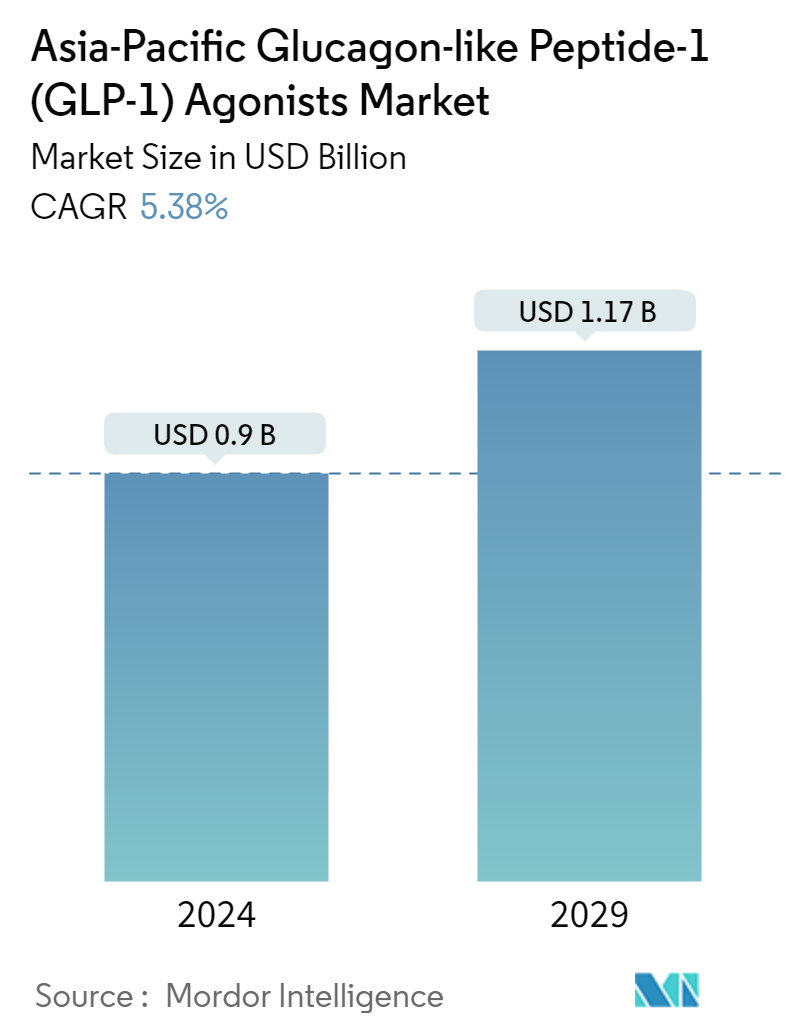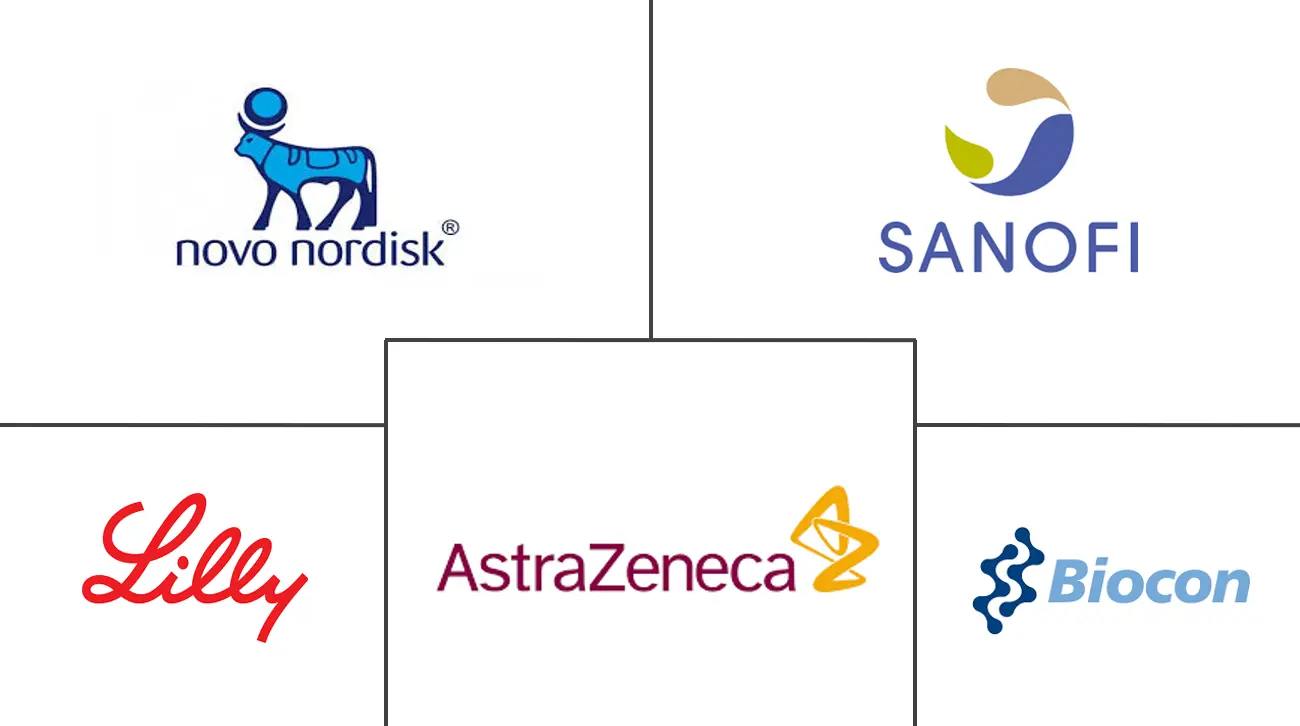Market Size of Asia-Pacific Glucagon-like Peptide-1 (GLP-1) Agonists Industry

| Study Period | 2018 - 2029 |
| Base Year For Estimation | 2023 |
| Market Size (2024) | USD 0.9 Billion |
| Market Size (2029) | USD 1.17 Billion |
| CAGR (2024 - 2029) | 5.38 % |
| Market Concentration | High |
Major Players
*Disclaimer: Major Players sorted in no particular order |
Need a report that reflects how COVID-19 has impacted this market and its growth?
Asia-Pacific Glucagon-like Peptide-1 (GLP-1) Agonists Market Analysis
The Asia-Pacific Glucagon-like Peptide-1 Agonists Market size is estimated at USD 0.9 billion in 2024, and is expected to reach USD 1.17 billion by 2029, growing at a CAGR of 5.38% during the forecast period (2024-2029).
The COVID-19 pandemic positively impacted the Asia-Pacific Glucagon-like Peptide-1 (GLP-1) Agonists Market. Diabetes and uncontrolled hyperglycemia are risk factors for poor outcomes in patients with COVID-19 including an increased risk of severe illness or death. People with diabetes have a weaker immune system, the COVID-19 complication aggravates the condition, and the immune system gets weaker very fast. People with diabetes have more chances to get into serious complications rather than normal people.
Glucagon-like peptide-1 receptor agonists (GLP-1RAs) are a class of medications used for the treatment of type 2 diabetes and some drugs are also approved for obesity. One of the benefits of this class of drugs over sulfonylureas or meglitinides is that they have a lower risk of causing hypoglycemia. Besides being important glucose-lowering agents, GLP-1RAs have significant anti-inflammatory and pulmonary protective effects and an advantageous impact on gut microbes' composition. Therefore, GLP-1RAs have been potential candidates for treating patients affected by COVID-19 infection, with or even without type 2 diabetes, as well as excellent antidiabetic (glucose-lowering) agents during COVID-19 pandemic times.
According to International Diabetes Federation (IDF), 90 million adults (20-79) are living with diabetes in the IDF South-East Asia (SEA) Region. This figure is estimated to increase to 152 million by 2045 and 206 million adults (20-79) are living with diabetes in the IDF Western Pacific Region, which is estimated to increase to 260 million by 2045.
Diabetes mellitus has been of wide concern with its high prevalence, resulting in increased financial burdens for clinical systems, individuals, and governments. The market players are adopting various strategies such as collaborations, partnerships, mergers, acquisitions, and expansions to increase market share. Technological advancements have increased over the period leading to several modifications either in the Glucagon-like peptide-1 receptor agonists drugs or the formulations being developed.
Therefore, due to increased prevalence and the aforementioned factors, the studied market is anticipated to witness growth over the analysis period.
